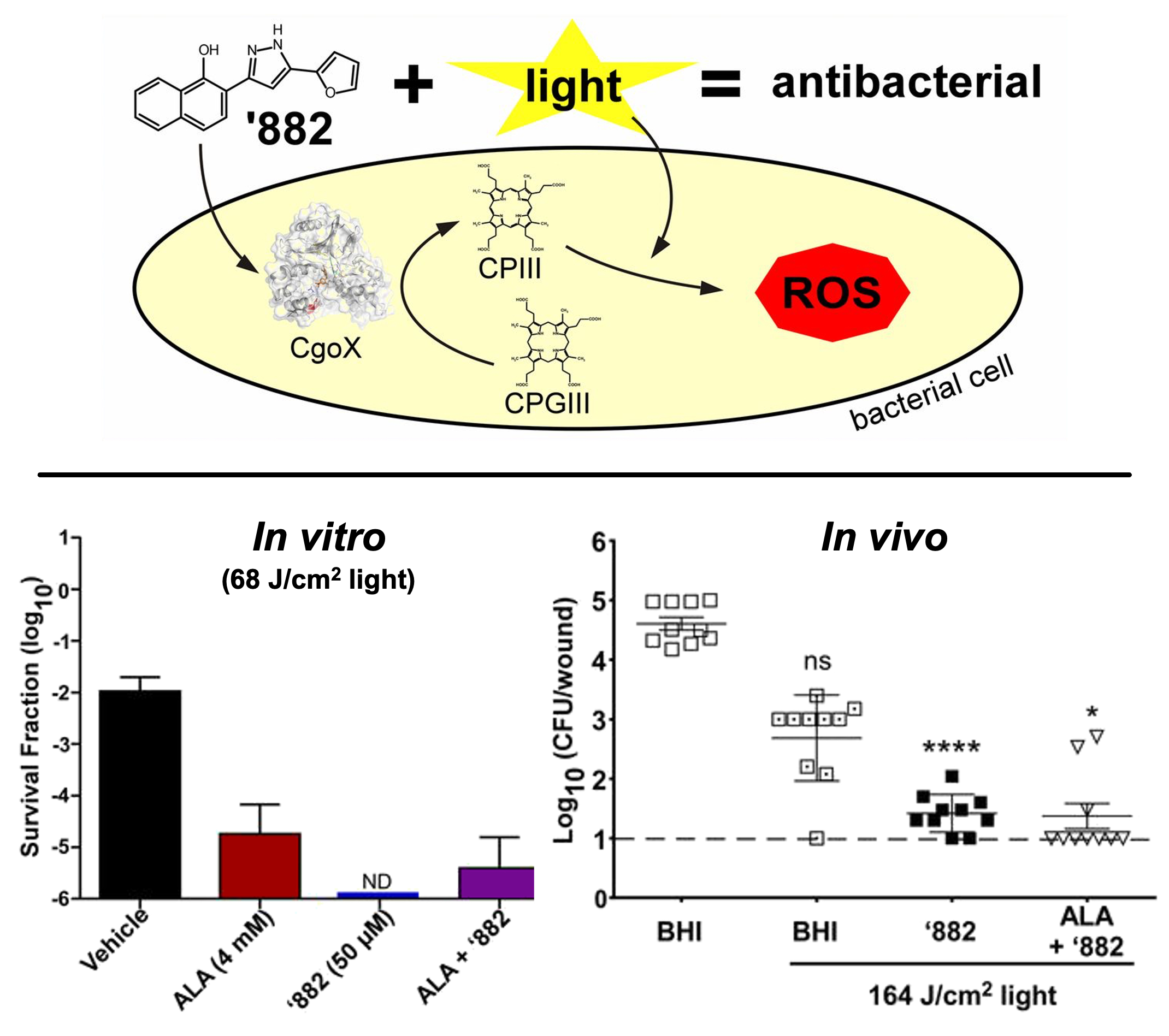Description:
Summary
Acne is the most common skin condition, with direct treatment costs totaling over $3 billion each year. Vanderbilt researchers have developed a photodynamic therapy (PDT) for effectively and specifically treating Propionibacterium acnes infections, enabling improved clinical support for patients.
Addressed Need
More than 90% of the global population suffer from acne during their lifetime, leading to billions of dollars in clinical costs and immeasurable emotional and psychological distress. This technology provides a powerful new therapy for treating this common condition, as well as infections caused by other Gram-positive bacteria, including methicillin-resistant Staphylococcus aureus (MRSA) and Bacillus anthracis (anthrax).
Technology Description
While light is now commonly used to treat acne and cancer, this technology improves the effectiveness of PDT by co-administering a small molecule therapeutic. This therapeutic activates the overproduction of growth-essential photosensitizers specifically in Gram-positive bacteria like P. acnes. Blue light directed at the infection site then excites these photosensitizers, producing reactive oxygen species that destroy the pathogens from the inside.
Competitive Advantages
Preliminary data demonstrate that this technology can effectively kill P. acnes, with toxicity improved by orders of magnitude when compared to light alone or to light with aminolevulinic acid (ALA), a commonly used PDT prodrug that broadly produces photosensitizers in other bacteria and humans as well. This approach is also targeted and specific, attacking only the pathogens at the infection site to preserve skin cells and avoid negative off-target effects. The combination therapy and growth-essential nature of the photosensitizer also reduce susceptibility to resistance.
Stage of Development and IP Status
This technology has been validated in vitro and in vivo. We are seeking commercial partners to further develop it for clinical applications.
Patent: US9867879B2
Publication: PNAS 2017

Top: The small molecule developed by VU researchers improves the potency of acne PDT treatment by increasing production of intracellular photosensitizers. Bottom: in vitro and in vivo data demonstrate that a therapy of ‘882 and blue light effectively reduces the bacterial burden of P. acnes when compared to controls (Vehicle, BHI) and ALA, another FDA-approved photosensitizer.